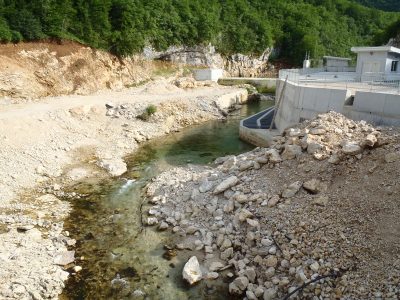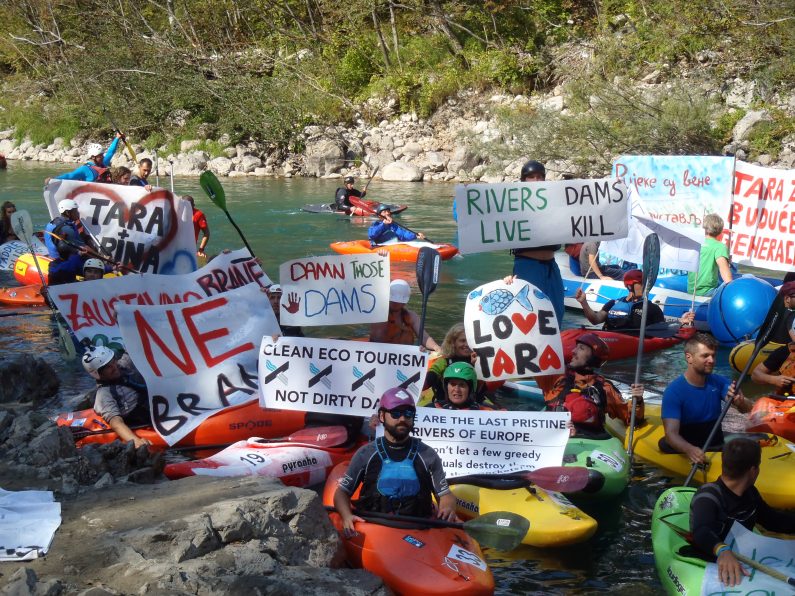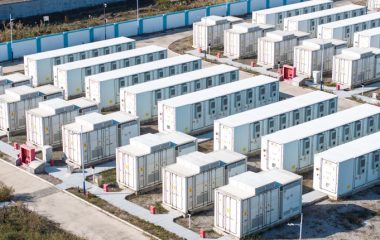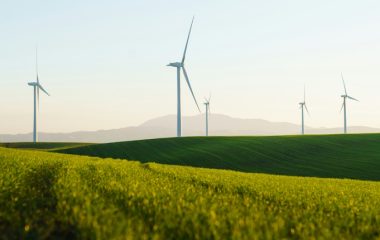
Photos: Pippa Gallop
Share
Share
Author: Pippa Gallop, Research Coordinator, CEE Bankwatch Network
One of the main factors driving the controversial small hydropower boom in the Western Balkans is the availability of feed-in tariffs, providing investors with a near-certain income for several years. The aim of this policy has been to incentivise the development of renewable energy, however most of the countries have supported much more hydropower than wind and solar so far.

This has resulted in serious environmental damage – especially compared to the modest amount of electricity generated – as hitherto pristine rivers like the Ugar, Sana (in Bosnia and Herzegovina), Jošanica, Vlasina (in Serbia), Brajcinska and Tresonecka (in Macedonia) have been disfigured and many more are threatened.
To critics of such developments, paying companies a guaranteed price to produce electricity – and usually a very generous one, especially for the smaller plants – looks like a pure scam, especially given that hydropower is already a mature technology. Headlines suggesting that those close to governments are benefitting while the public is being ripped off are increasingly common across the region.
Feed-in tariffs for hydropower bringing more costs than benefits
Two weeks ago, economic analyst Damir Miljević presented an assessment commissioned by the Center for Environment showing that Bosnia and Herzegovina’s current system of concession fees and incentives for small hydropower plants already produces direct social and financial losses of more than EUR 2 million annually. This figure would be doubled if subsidies are approved for all the plants that have applied.

New EU rules on renewables incentives need to be applied in the Western Balkans too
Against this background, EU countries have been updating their rules on renewable energy incentives in the last few years. The trend – enshrined in the Guidelines on State aid for environmental protection and energy 2014-2020 (EEAG) and new Renewable Energy Directive – is towards paying premiums instead of feed-in tariffs, and ensuring that producers at least have to compete with each other to offer a lower production price in order to be eligible for support.
The Energy Community countries (the Western Balkans plus Ukraine, Moldova and Georgia) too have to adhere to EU competition law, including the EEAG, so they should also be switching to an auctions and premiums system, in order to get better value for money.
Yet so far they are dragging their feet.
Western Balkans countries continuing with feed-in tariffs for hydropower
Albania has been the frontrunner in introducing auctions for solar and wind and has recently completed its first solar auction. Inexplicably, though, it continues to offer feed-in tariffs for hydropower up to 15 MW. This is especially difficult to understand for a country that suffers from fluctuating electricity generation due to its complete reliance on hydropower.
The Macedonian government, too, has recently published draft legislation on renewable energy incentives, introducing auctions and premiums for wind farms of up to 50 MW and PV power stations with an installed capacity of up to 30 MW. But again, feed-in tariffs – without auctions – would remain in place for hydropower plants of up to 10 MW, wind farms of up to 50 MW, and biomass and biogas-fired facilities of up to 1 MW.
At the end of November the Serbian government followed suit by extending its decree on incentives for the production of electricity from renewable energy sources and high-efficiency heat and power cogeneration until the end of 2019. The decree had been due to expire on December 31, 2018, and no new legislation had been proposed, so its prolongation provides a deadline extension to producers with ongoing projects that have not managed to secure feed-in tariffs yet.
Serbia’s prolongation will not help solar and wind because the quotas until 2020 are already full. It will mainly help investors in other sources, including hydropower, biomass and biogas. Controversial projects like hydropower plants and the Vinča waste-to-energy incinerator may be able to sign new contracts for feed-in tariffs while solar and wind plants cannot.
Moving away from feed-in tariffs is essential to gain public support for the energy transition
Introducing auctions and premiums is not a panacea and will not per se exclude unsustainable energy projects – only energy policy that is subject to rigorous analysis and debate, together with well-enforced environmental legislation, will do that. But it may finally give solar and wind a chance to develop without being subjected to restrictive quotas and without inflicting massive costs on consumers.
It should also help to exclude some of the more controversial investors who are currently cashing in on small hydropower, because companies will have to analyse the feasibility of their projects much more carefully in advance.
Continuing to hand out feed-in tariffs to unsustainable forms of renewable energy, on the other hand, is sure to prove counterproductive. It is the public which is paying and discontent with this system of guaranteed profit is starting to show.
Moving away from feed-in tariffs for all but the very smallest renewable energy projects requires some political courage for politicians under pressure from investors, but it is a move that has to be made. Without it, all financial support for renewable technologies will ultimately be threatened – a situation we can ill afford if we want to move towards an energy efficient and sustainable energy system.









Be the first one to comment on this article.